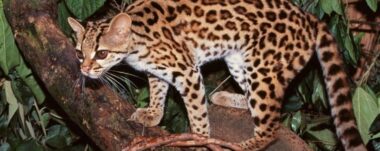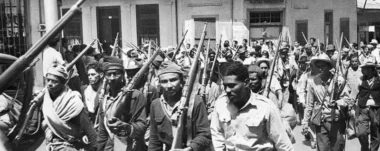Calypso: Afro-descendant Intangible Heritage of Costa Rica
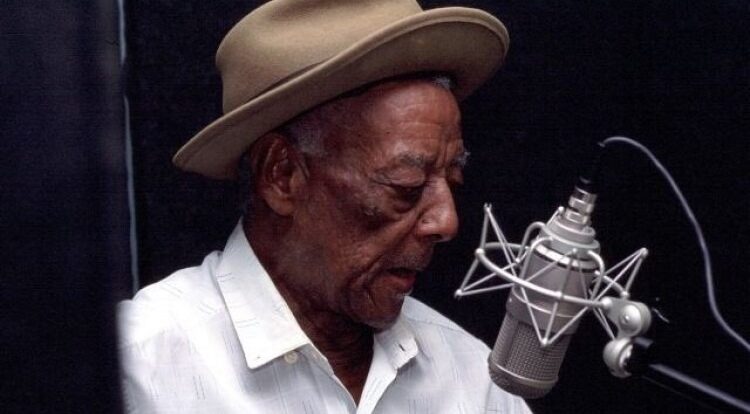
Calypso from Limón is much more than a musical genre: it is the voice, rhythm, and living memory of the province of Limón and its African heritage. This tradition was declared an “outstanding expression of Costa Rica’s Afro-descendant intangible heritage” by Executive Decree No. 37418-C, published in La Gaceta No. 240 on December 12, 2012. Its history, marked by resilience and creativity, reflects the multicultural identity of the Costa Rican Caribbean.
Caribbean roots of calypso
Calypso is a musical expression that originated on the island of Trinidad and Tobago, from where it spread throughout the American Caribbean. Over time, it drew on the rhythms of the African diaspora in America and adopted influences such as Cuban son, Jamaican reggae and ska, particularly in the 1980s, as well as Puerto Rican salsa.
The calypso arrived in Costa Rica around 1870, when Afro-Caribbean immigrants from Jamaica, Barbados, and Saint Kitts arrived in the Costa Rican Caribbean to work mainly on the railroads and banana plantations. Since then, calypso music has taken root in Limón and become an essential part of its celebrations and daily life.
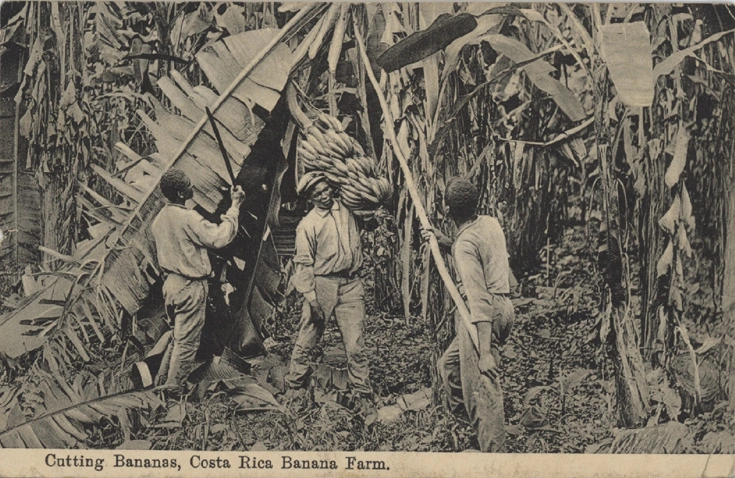
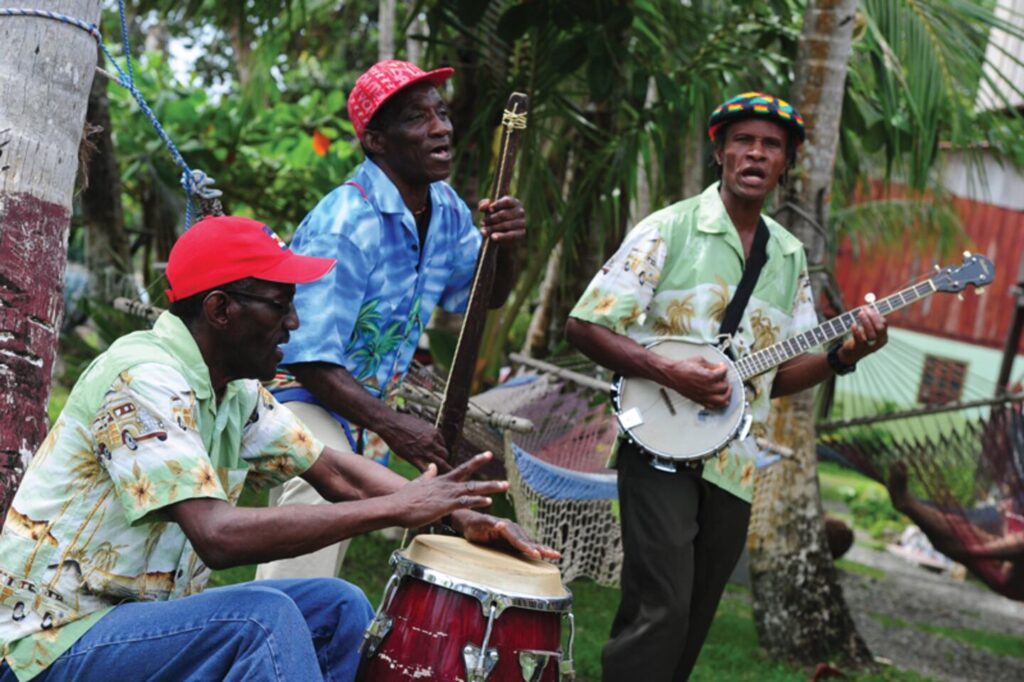
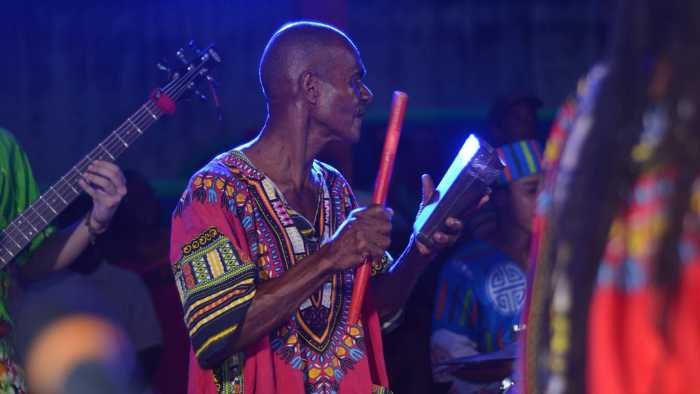
The art of storytelling
Although calypso is not native from Limón, it is the music that characterizes the carnivals celebrated every year in the streets of the city. Calypso musicians use unimaginable words when composing or singing calypso so that the song rhymes in all its verses. According to Manuel Monestel of the calypso group Canto Americano, “the calypso of Limón is not the same calypso that is played and composed in Jamaica or Trinidad; the calypso of Costa Rica has evolved over the years.
Monestel, 1993
Distinctive for its ingenuity in addressing social issues with humor, satire, and mischief, calypso offers a positive outlook even in the face of adversity. This narrative style originates from the “chantuelles,” Afro-Caribbean troubadours who improvised songs about relevant events in their communities.
A prime example is the calypso composed by Walter Ferguson about monilia, a fungus that devastated the cocoa crop, the source of livelihood for many families in Limón after the banana company withdrew. Through his music, Ferguson managed to put a humorous spin on an economic crisis that affected the entire region.
Identity and evolution
Even though calypso didn’t originate in Limón, it’s now the genre that defines its carnivals and festivities. Over the decades, has evolved, incorporating new rhythms and instruments. During the 1970s and 1980s, it incorporated influences from cumbia, popularized by groups such as Cumbia Macancera, Los Biggios Caracas, El Gran Combo, and The Final Stars, giving it its own distinctive style.
A typical ensemble includes guitar with three major chords, bagpipes, drums, clarinets, bass drums, harmonica, and pandoras, creating a vibrant and festive sound.
A traditional element, now fallen into disuse, was the lyrical battles between calypso singers, where two singer-songwriters competed in wit and rhymes, accompanied by a guitarist. These poetic contests were a display of talent and creativity, without offense or violence.
Legendary figures of Limón’s calypso scene
Two names stand out for their invaluable contribution to this tradition: Roberto “Buda” Kirlew and Mr. Walter Ferguson, known worldwide as the “King of Calypso.”
Roberto “Buda” Kirlew (1952-1994)
Born in the Cristóbal Colón neighborhood of Limón, Buda faced enormous challenges from childhood. He suffered from polio and lost both legs, but during his stay at San Juan de Dios Hospital he learned to play the harmonica. Later, with just three major chords, he mastered the guitar and formed the band Buda y su Charanga, which won national awards with performances such as Ferguson’s Black Man Food. His legacy is remembered for the humor and joy of his compositions, despite adversity.
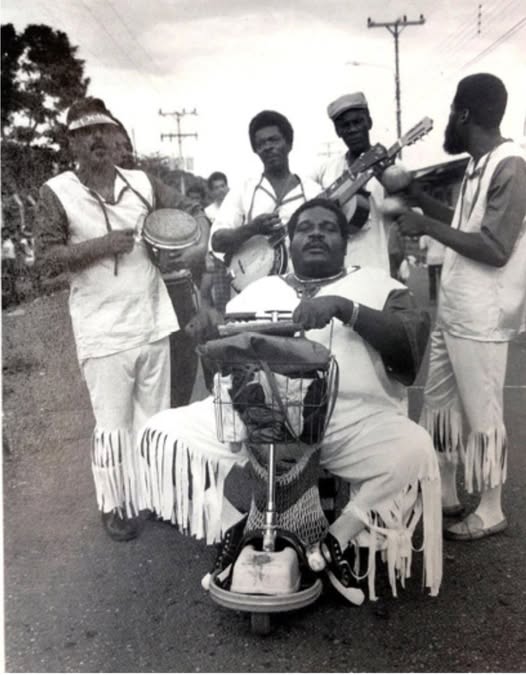
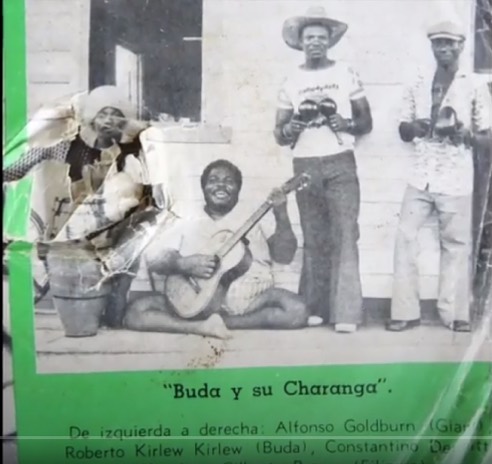
Mr. Walter Ferguson (1919-2023)
Born in Cahuita, Ferguson is recognized by the community as the King of Calypso and a key figure in the cultural history of Limón. Self-taught since the age of seven on guitar, harmonica, and dulzaina, he composed his first calypso at the age of 20, titled A Sailing Boat. Throughout his life, he created more than 100 calypsos, many of which were never recorded or written down, preserved only in the collective memory of his community.
The most iconic songs include Cabin in the Water, inspired by the creation of Cahuita National Park, Tacuma and Anancy, based on traditional Afro-Caribbean stories, and Black Man Food, an ode to Afro-Limón cuisine. Musicians such as Manuel Monestel, from the group Canto Americano, compiled and disseminated his work, which inspired documentaries and books published by UNED in 2002 and 2004.
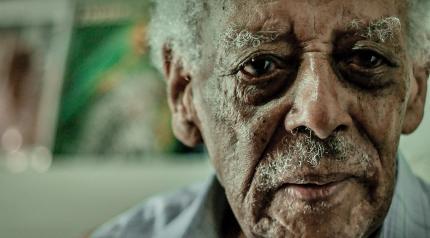
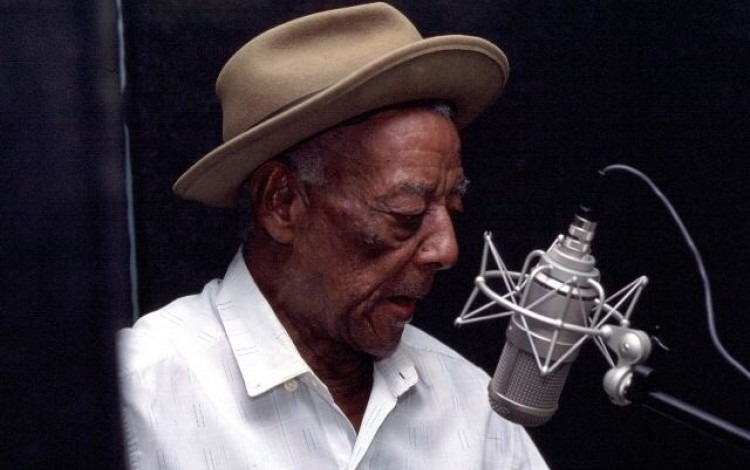
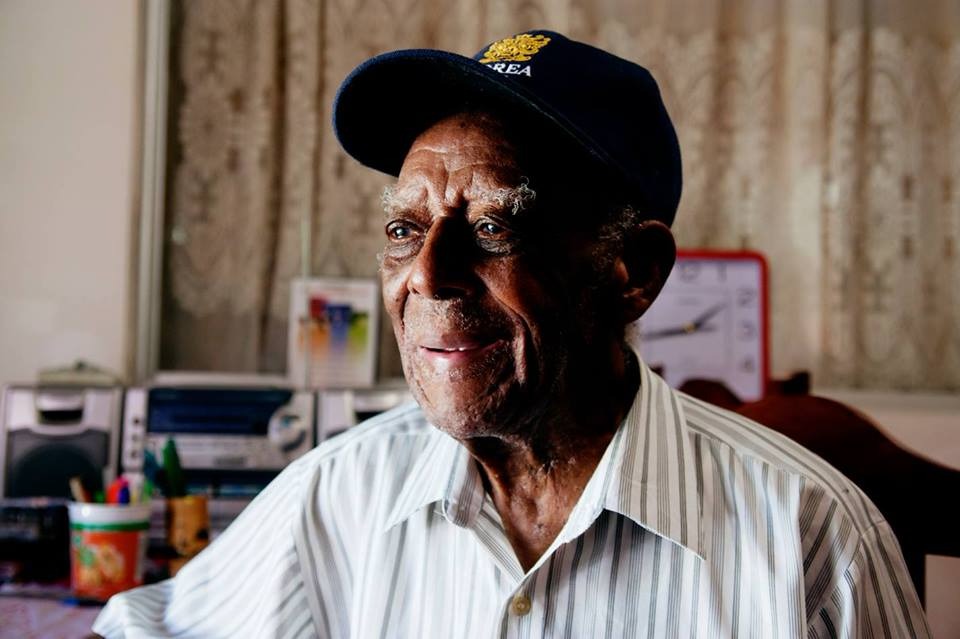
Limón calypso is not just music: it is oral history, community identity, and cultural resistance. Each chord and each verse narrates the daily life, struggles, and joys of an Afro-Caribbean people who have left a deep mark on Costa Rican culture.
Sensorial Sunsets
Navigate articles




